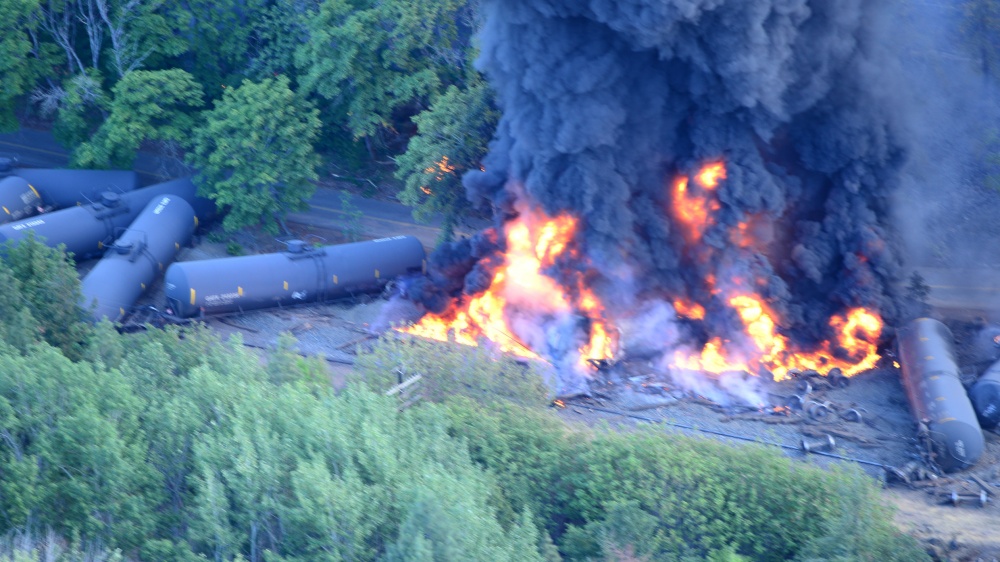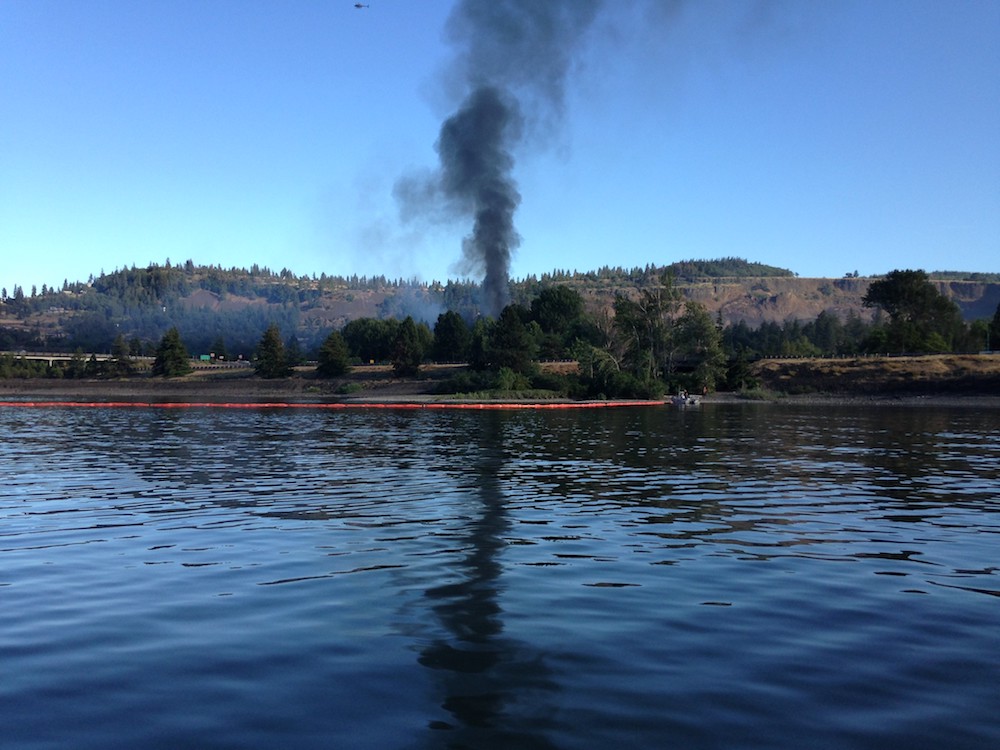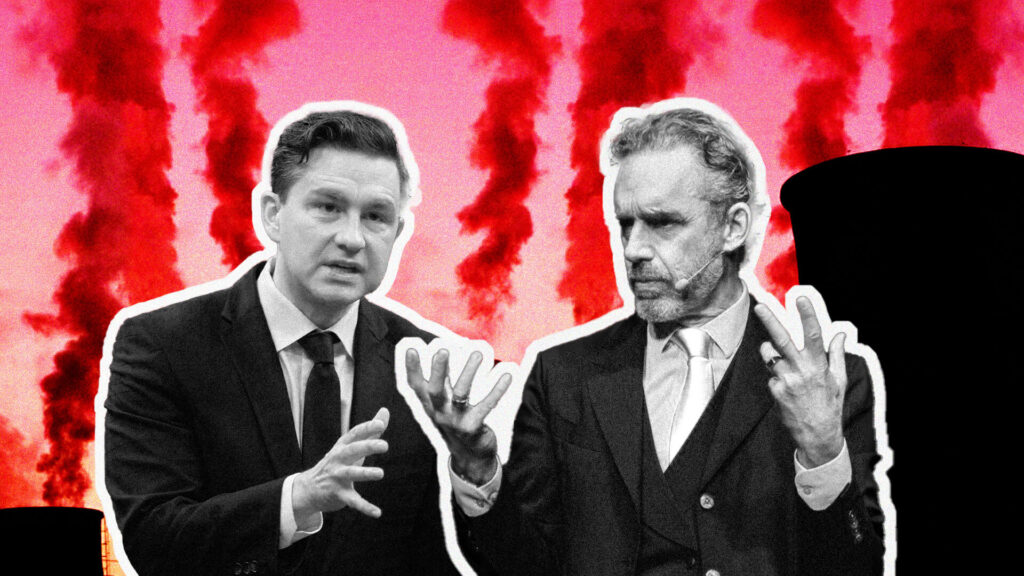On October 23, New York Attorney General Letitia James, joined by attorneys general from Maryland, New Jersey, and California, sent a letter of support to the U.S. Pipeline and Hazardous Materials Safety Administration (PHMSA) over a Washington state law that would limit the volatility of oil transported by train through the state.
That oil originates in the Bakken Shale in North Dakota and Montana, where trains help take the place of scarce pipelines in order to move fracked crude oil to Washington’s refineries and ports along the coast. North Dakota and Montana have fought back against Washington’s law, which was passed in May, and filed a petition to PHMSA in protest just two months later.
Spurred by safety concerns about oil trains derailing and exploding, the Washington law would cap the vapor pressure of crude oil moved by rail at 9.0 pounds per square inch (psi) and would be triggered by a rise in oil train traffic in the state.
States vs. Feds
Part of the argument made by North Dakota and Montana is that the Washington regulation should be pre-empted by federal regulation, which is in a state of limbo, on limiting the volatility of oil train cargo. That approach effectively says the federal government has no need to regulate the vapor pressure of oil transported by rail.
As DeSmog has documented, federal regulators recently issued just such a pre-emptive order, which they claim invalidates state safety regulations requiring two-person crews to operate freight trains. The Federal Railroad Administration spelled out this approach, saying it would focus on removing “unnecessary barriers” (regulations) and instead give “voluntary guidance” on safety improvements to railroads and oil companies.
Rail tank car for oil and ethanol transport. Credit: Justin Mikulka
The debate over limiting vapor pressure of oil being transported by rail — which would make the flammable oil less volatile and less likely to ignite in rail accidents — has been ongoing since the devastating 2013 Lac-Mégantic, Quebec, rail disaster that killed 47.
In 2015, U.S. Secretary of Transportation Anthony Foxx wanted to create national regulations limiting the vapor pressure of oil moved by rail, but as Reuters reported at the time, his efforts fell apart:
“The Obama administration weighed national standards to control explosive gas in oil trains last year but rejected the move, deciding instead to leave new rules to North Dakota, where much of the fuel originates.”
A freedom of information request filed by DeSmog revealed that the Obama administration did not, in fact, leave creating new rules to North Dakota but actually worked with state regulators there on a standard allowing oil vapor pressure up to 13.7 psi, a level well above most of the oil leaving North Dakota by rail.
That same year, then-New York Attorney General Eric Schneiderman petitioned PHMSA for a national vapor pressure standard of 9.0 psi. (New York state has also been a major East Coast hub for oil trains.) That effort resulted in a proposed rule from PHMSA during the last days of the Obama administration.
While PHMSA has not yet acted on this proposed regulation, based on the Department of Transportation’s (DOT) previous actions under Trump, this DOT agency likely will withdraw the national vapor pressure regulation and, as with the two-person crew rule, claim that the federal action pre-empts Washington state law on the issue.
Debating Established Science
There are two important facts to understand about this interstate discussion on regulating crude oil volatility. First, the science is very clear that oil containing more natural gas liquids like butane and propane will have higher vapor pressure and therefore, higher volatility, which increases ignitability. While the oil industry has taken to disputing this information (while at other times affirming it), it represents basic, well-established science (more details on that below).
Consider the oil industry’s public track record on other areas of science: Industry leader ExxonMobil is currently in court in New York over allegations that it lied to shareholders and the public about the costs and impacts of climate change, and last week Massachusetts filed suit against the oil giant, saying that it spread disinformation about climate science. Public trust of oil companies isn’t particularly high at the moment.
We quickly found out the volatility of Bakken crude when we started to ship it by rail, says @BNSFRailway Exec Chairman Matt Rose. #wsjeco
— russell gold (@russellgold) April 7, 2016
The second point is one made often by North Dakota regulators and oil producers like Lynn Helms, director of the North Dakota Department of Mineral Resources: the fight over limiting Bakken oil’s volatility is about money, not science. Earlier this year, Helms said that taking the steps to stabilize the crude oil by removing volatile natural gas liquids in order to achieve a vapor pressure of less than 9.0 psi would “devalue the crude oil immensely.”
In other words, the same natural gas liquids that make the oil more dangerous to move by rail also make it more valuable. That issue is at the heart of why longer, heavier trains loaded with volatile crude oil continue rolling through cities and towns across North America.
North Dakota’s Flawed Arguments
In keeping with North Dakota’s financial motivation not to limit oil vapor pressure, its industry-friendly officials have made some flawed and misleading arguments about the basic scientific facts about oil.
North Dakota’s attorney general says a federal study analyzing the volatility of Bakken crude supports the state’s petition to overturn Washington state’s oil shipment safety restrictions.https://t.co/waEruvwJ2h
— KOMO News (@komonews) August 30, 2019
In August, North Dakota Attorney General Wayne Stenehjem used a recent study from Sandia National Laboratories, which examined the flammable properties of three types of oil, including Bakken oil, to bolster his case that federal regulators should overturn the Washington state law on vapor pressure.
“The net result is Bakken oil is no different than any other kind of oil with respect to volatility,” Stenehjem said.
This statement, however, doesn’t hold up with a February 2014 analysis by the Wall Street Journal, which found Bakken oil “contains several times the combustible gases as oil from elsewhere.” Even 2014 data from the oil refiners lobbying group, the American Fuel and Petrochemical Manufacturers, confirmed that Bakken oil “is very volatile and contains high levels of combustible gases,” reported the Wall Street Journal.
To claim that Bakken oil isn’t different “with respect to volatility” than any other kind of oil comes across as ridiculous. Furthermore, the 2019 Sandia study does not support that claim and didn’t set out to answer that question. The whole point of the Sandia study was to examine how crude oils with a range of vapor pressures (a measure of volatility) coorelate with the size of oil train accident blast zones. The particular Bakken crude sample used in this study had the highest vapor pressure of the three oil samples tested.
After an oil train derailed and caught fire in Mosier, Oregon, near the Washington border, in 2016, the Washington State Department of Ecology placed boom (an oil containment tool) in Rock Creek as a precaution. Credit: Washington State Department of Ecology, CC BY–NC 2.0
Using the Sandia study to justify attacking Washington state’s vapor pressure rule is problematic for other reasons as well, with perhaps one of the study’s biggest flaws being that the vapor pressures of the Bakken oil samples examined were relatively low, between 9 and 10.2 psi.
As the New York Attorney General’s letter points out, derailments of Bakken oil trains that have resulted in fires and explosions have involved oil with vapor pressure much higher than 9.0 psi. For the one in Mount Carbon, West Virginia, it was 13.9 psi and in Lynchburg, Virginia, over 14 psi. In the one Bakken oil train derailment that resulted in a large spill but no fire — the July 2015 event in Culbertson, Montana — the oil samples tested had vapor pressures ranging from 8.73 psi to 9.23 psi.
The fact that the Sandia study chose to investigate only Bakken oil with low vapor pressures is a major limitation. At the very least, the study should have examined oil with vapor pressures up to the North Dakota limit of 13.7 psi.
But because the Sandia study effectively tested Bakken oil with a vapor pressure just above Washington state’s proposed limit of 9.0 psi, its conclusions actually support the state’s push to require lower vapor pressure. The study, which took place over a period of five years, found that Bakken oil with a lower vapor pressure reacts comparably to other oils with low vapor pressures, at least for the tests Sandia conducted. It should be noted that those tests do not predict how likely various oils are to ignite in a train derailment, which is arguably the most important, and still unanswered, question about oil train safety.
Another issue with North Dakota asserting that Washington state doesn’t have the right to set a vapor pressure limit for oil moved by rail is that, as mentioned previously, the oil-producing state did exactly that just a few years before, setting a standard of 13.7 psi, a move which, again, the Obama administration used as an excuse to avoid setting a national vapor pressure standard in 2015.
The Coming Legal Battle
Despite the claims of North Dakota’s attorney general, the state does not have a valid scientific argument against limiting oil volatility.
As we have noted repeatedly at DeSmog, when an actual oil scientist is asked about this issue, there is no ambiguity about how to reduce the volatility, and risk, of Bakken oil.
“The notion that this requires significant research and development is a bunch of BS,” Ramanan Krishnamoorti, a professor of petroleum engineering at the University of Houston, told Al Jazeera in 2015. “The science behind this has been revealed over 80 years ago, and developing a simple spreadsheet to calculate risk based on composition and vapor pressure is trivial. This can be done today.”
Nevertheless, the oil industry and its supporters in the North Dakota government seem set on casting doubt on the science of oil volatility while pushing for the Trump administration to overrule state safety regulations focused on protecting residents.
After the Federal Railroad Administration’s decision to pre-empt state rules requiring two-person crews on freight trains, Nevada’s Attorney General Aaron Ford filed a petition in July challenging the move.
“Nevada is aggrieved by the provisions,” Ford stated in the petition, “because they infringe, without lawful authority, upon Nevada’s sovereign interest in enforcing its own health and safety statute on the subject of train crew staffing.”
The coming legal battles will be critical in the ongoing debate about the right of states to say no to the oil and gas industry for safety, environmental, and climate reasons. The oil industry lost a similar argument in 2016 when it argued that local municipalities — like Benicia, California — didn’t have the right to block new oil-by-rail infrastructure.
In April, Washington state senator Andy Billig summed up what is at stake.
“If the federal government won’t act to protect public safety and adopt a safer nationwide standard, we will adopt our own,” Billig (D-Spokane) said of the bill he sponsored. “There is just too much to lose — for people and our environment.”
The courts will likely decide whether states, in lieu of federal oversight, can create oil train safety regulations to protect their citizens or if the American public will need to trust its safety to corporations and hope for the best.
Speechless: FAA’s lax oversight played part in Boeing 737 Max crashes, but agency is pushing for even less oversight. https://t.co/E4Fwqnp6dr
— Naomi Oreskes (@NaomiOreskes) October 28, 2019
Main image: Rail cars burn near the Columbia River Gorge after a 100-car train carrying oil derailed near the town of Mosier, Oregon, June 3, 2016. Credit: U.S. Coast Guard/Petty Officer 1st Class Levi Read, public domain
Subscribe to our newsletter
Stay up to date with DeSmog news and alerts









